Kathmandu is like Timbuktu or Samarkand - a city that you will probably have heard of, even if you couldn’t pinpoint it accurately on a map. Kathmandu was made famous during the 1960s and 70s as the final destination of the Hippy Trail. Better known now as a gateway city for travelers looking for adventure in the Himalayas, many people just spend a bare minimum amount of time in Kathmandu before heading for higher altitudes. But for gravel riders looking for a warm-up ride before heading elsewhere, is there “prime” gravel riding to be found close to the city? Olly called on some local expertise to help him find out.
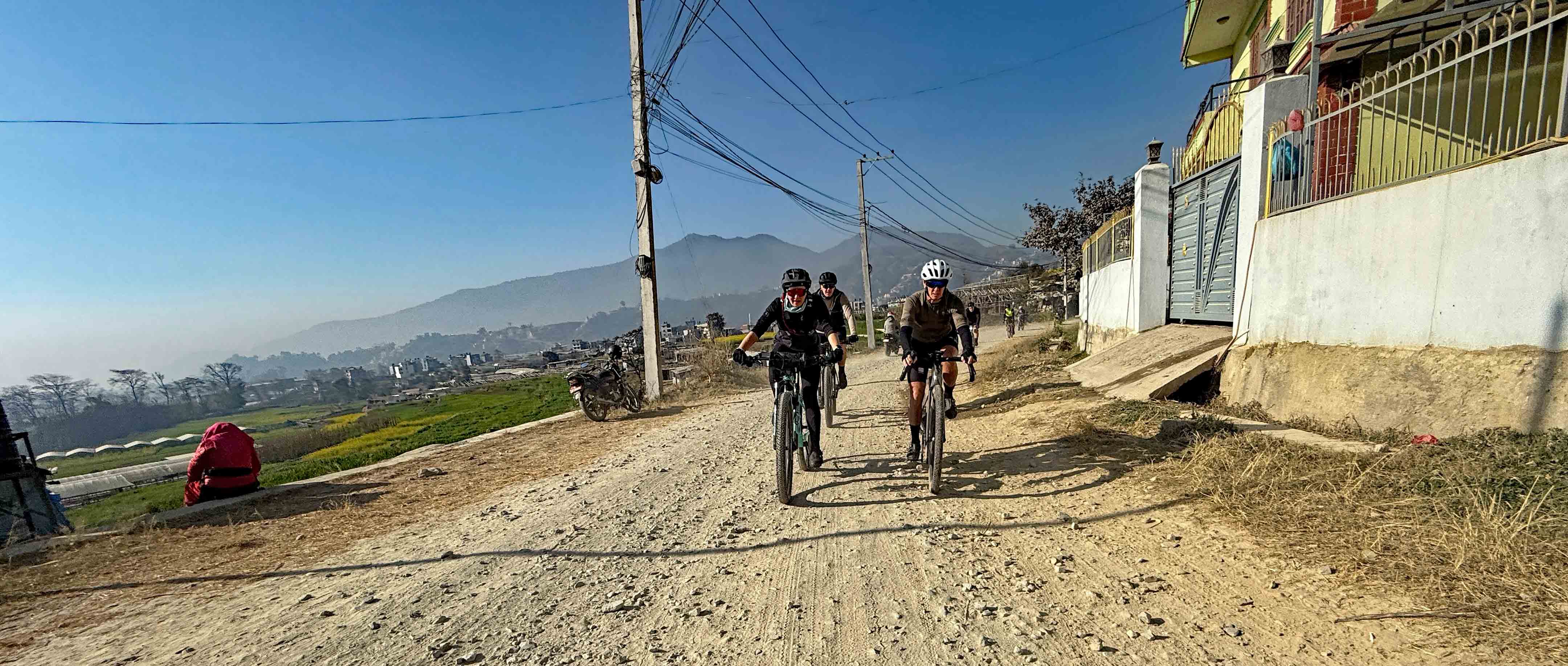
“Even as recently as 2017, most of these trails were singletrack” said Usha, one of our Nepali cycling guides, as we stood chatting in the sunshine, a cup of hot masala tea in hand. She continued, “But they are increasingly being made into dirt roads or paved over.” Luckily Usha’s trail knowledge was impressive and she had pieced together a perfect warm-up ride – straight from the hotel’s front door she had led the way safely through the frenetic early morning traffic before we started on the 3 km paved climb up to the high point of our ride at 1480m.
For anyone who hasn’t experienced riding in Asia before, the first few minutes can be quite a shock. We set off just after 8am and the city center roads near our hotel were busy with early morning traffic. The narrow streets were frenetic with activity – motorists shared space with pedestrians, shop keepers opening their businesses and smartly uniformed children walking to school. Apart from the sheer culture shock of being somewhere new, Nepali drivers and motorbike riders seem to follow an unwritten code, where your aim as motorist was apparently to keep moving at all times. When you reached a t-junction, rather than stopping and giving way as we might in the west, you edge confidently out into the traffic and everything else slows down slightly and moves around you. No one seems to get angry or abusive. Horns are tooted in a gentle “don’t forget that I’m here” manner, rather than in an aggressive “get out of my way” manner which westerners might be more accustomed too. Despite what appears to be utter chaos, it all seems to work OK. Perhaps even more amazingly, despite our somewhat lowly status as cyclists, drivers and motorbike riders let us filter out into traffic with total calm and patience. Sure, as a cyclist you have to ride confidently and be a little assertive, but the consensus of the group was that riding in Kathmandu’s rush hour traffic was actually quite a fun experience rather than the stressful and life-diminishing experience it always seems to be in the west.
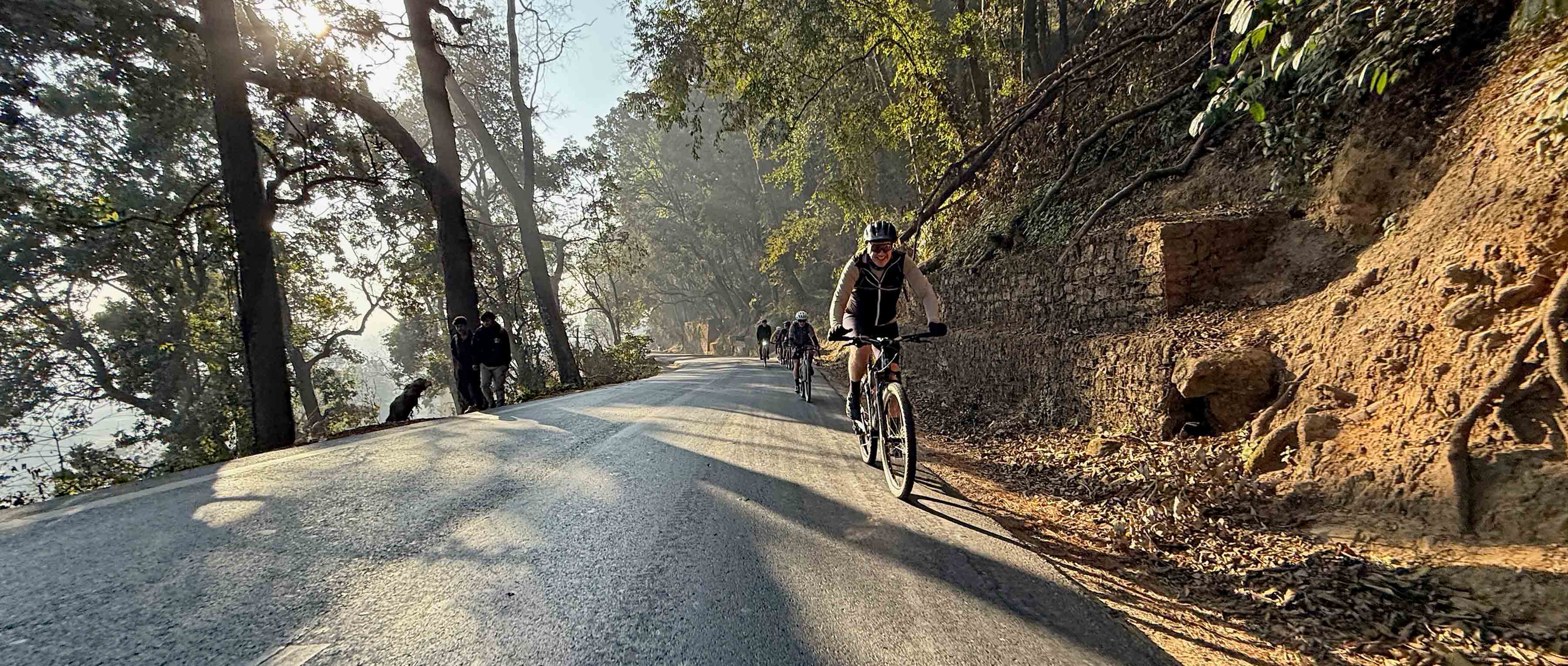
Remarkably quickly after setting off we left the city behind. The encroaching forest gave the road a much more peaceful air and the quality of the tarmac was remarkably good. As we climbed, a natural pecking order appears in the group. Usha, a Nepali double National MTB champion, set a steady pace, albeit one of a rider who was used to living and riding in the Himalayas and the ease with which she climbed I suspected made many of us feel a little envious. Seeing as we were all here to take part in the Trans-Nepal gravel event, Usha made sure that our warm-up loop contained a good mix of surfaces and as soon as we reached the top of the climb, we turned off and were straight away onto a lumpy dirt road.
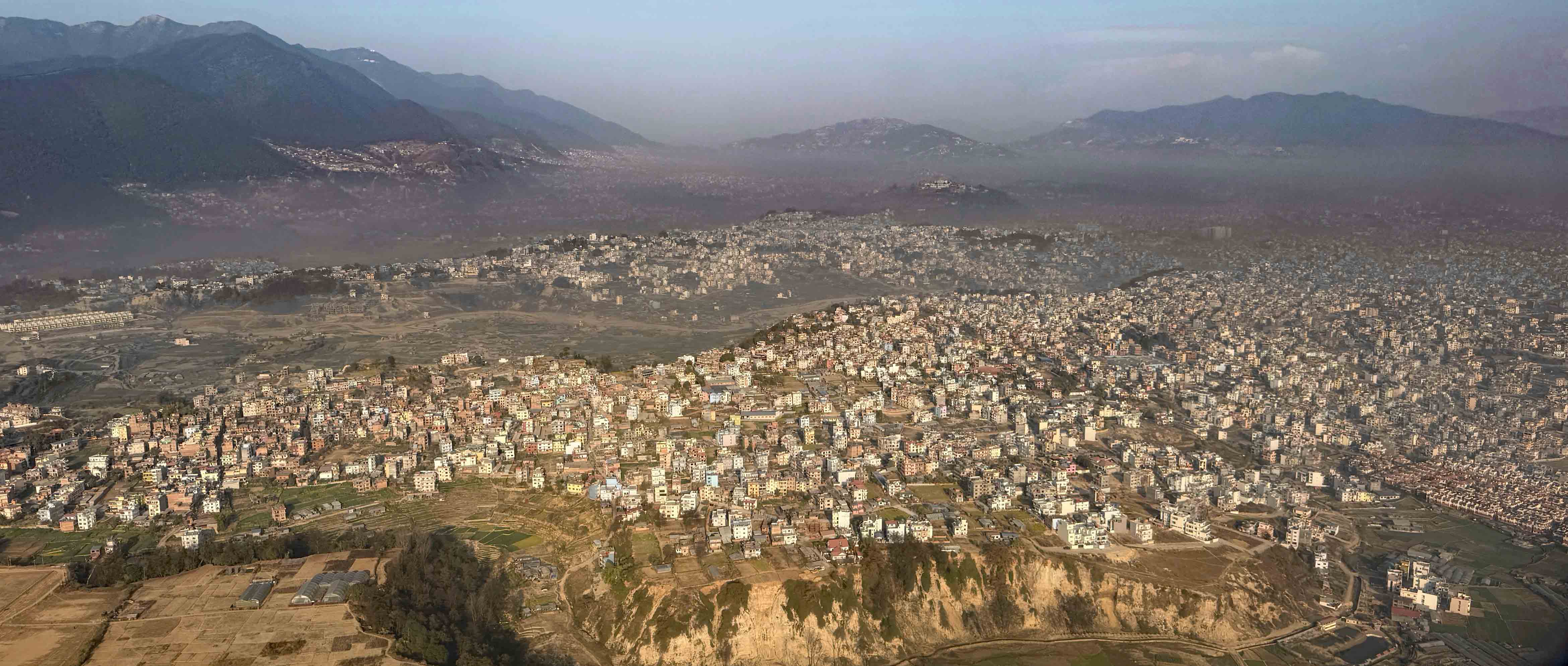
When you fly into Kathmandu, just before landing it feels like the plane skims the rooftops of the houses below, but once you get over the shock, the first thing most gravel riders with a window seat do is to look out and try to spot potential trails. That’s what I did anyway and I’m pretty sure I’m not alone in this slightly strange habit? The suburbs of the city are totally enmeshed in a network of dirt roads – gravel riding heaven if you can find them on the ground and link them together in a way that flows nicely.
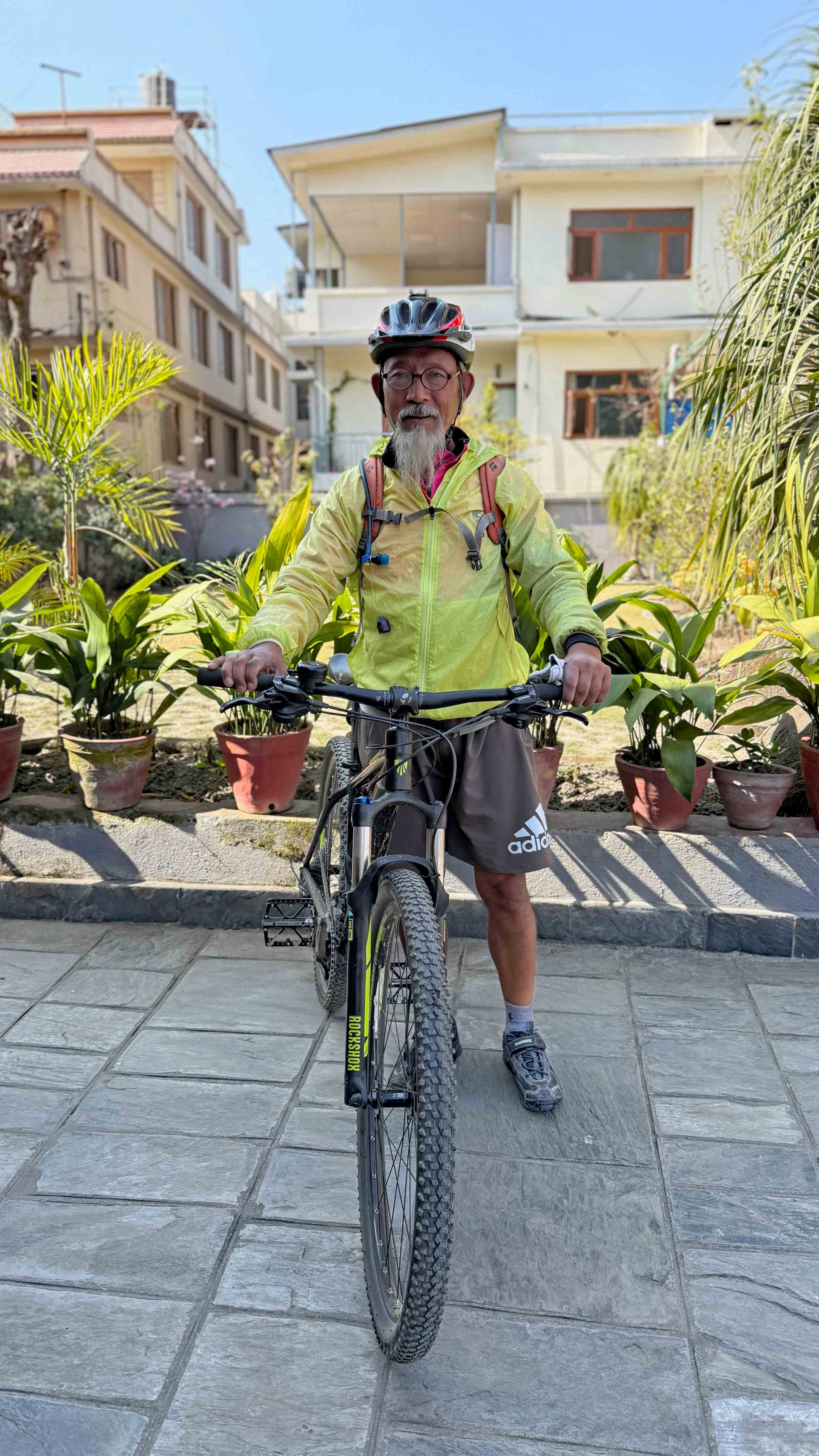
I first came to Nepal more than twenty years ago and during that visit, through a work contact I was introduced to Chhimi Urkyen Gurung, widely considered to be Mr Mountain Bike in Nepal, and we’ve been friends ever since. Although I’ve been back to Nepal quite a few times since then, I’d not ridden with Chhimi for 15 years, so as soon as I knew I was going to be back in Kathmandu, I got in touch to see if he was free to head out for a ride. Last time we had ridden together, we’d been mountain biking on some super gnarly trekking trails in the foothills of the Himalayas which included one section of crazy steep, stepped walking trail that is forever burned indelibly into my psyche. This time I explained to Chhimi my love of gravel riding and asked for his expert advice to find some trails linking Kathmandu with the UNESCO World Heritage listed city of Bhaktapur. Despite both of us having developed significantly more grey hair than when we last rode together, Chhimi is still an active mountain biker, but after some recent hospital treatment, he decided to delegate guiding duties to one of his Dawn till Dusk guides, Rakesh.
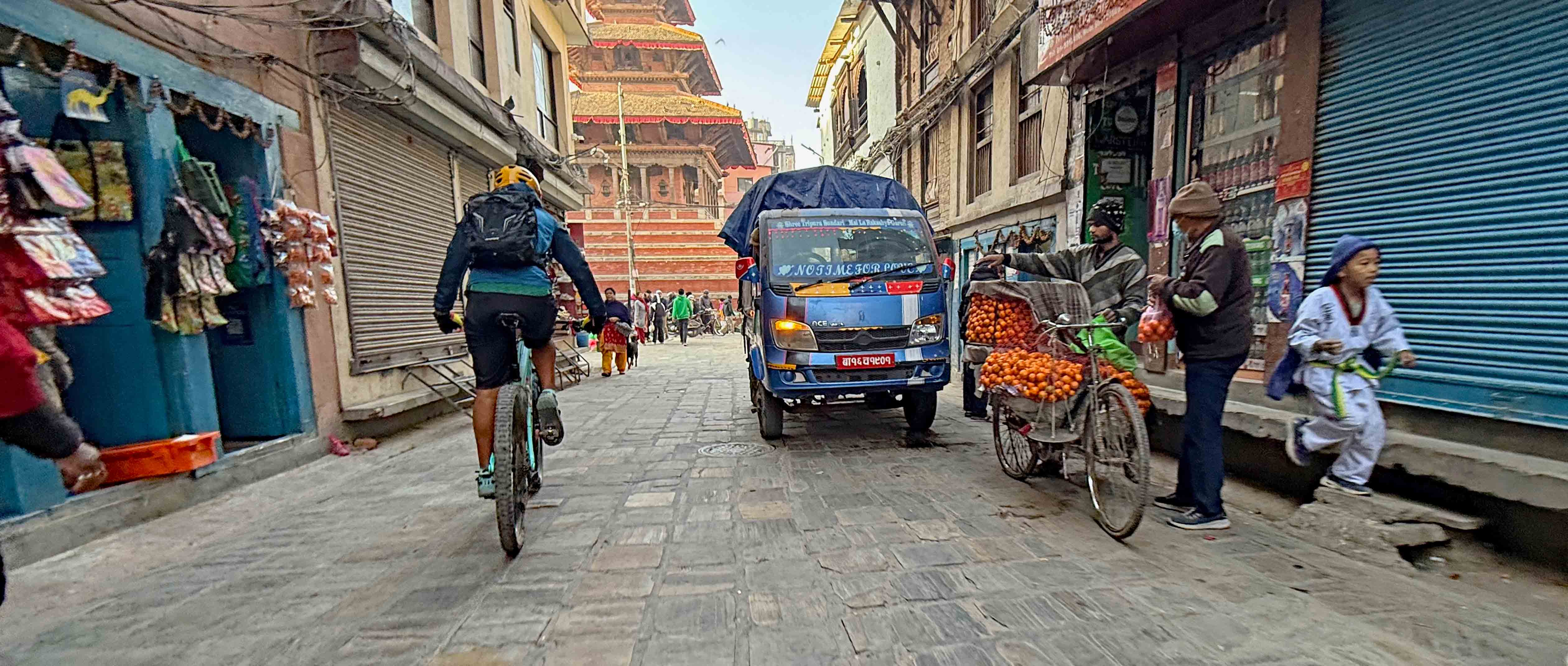
Less than 24 hours after I touched down in Kathmandu, I met up with Chhimi and Rakesh and we headed out in search of gravel riding. Although the Kathmandu Valley is full of potential riding, gravel bikes are not really “a thing” in Nepal yet and most riders choose to use mountain bikes instead. Chhimi and Rakesh arrived on fat tyred MTBs and I felt a few initial doubts about whether I was going to be underbiked. Fortunately, Rakesh had chosen a perfect route and my lack of suspension or huge volume tyres didn’t prove to any sort of problem.
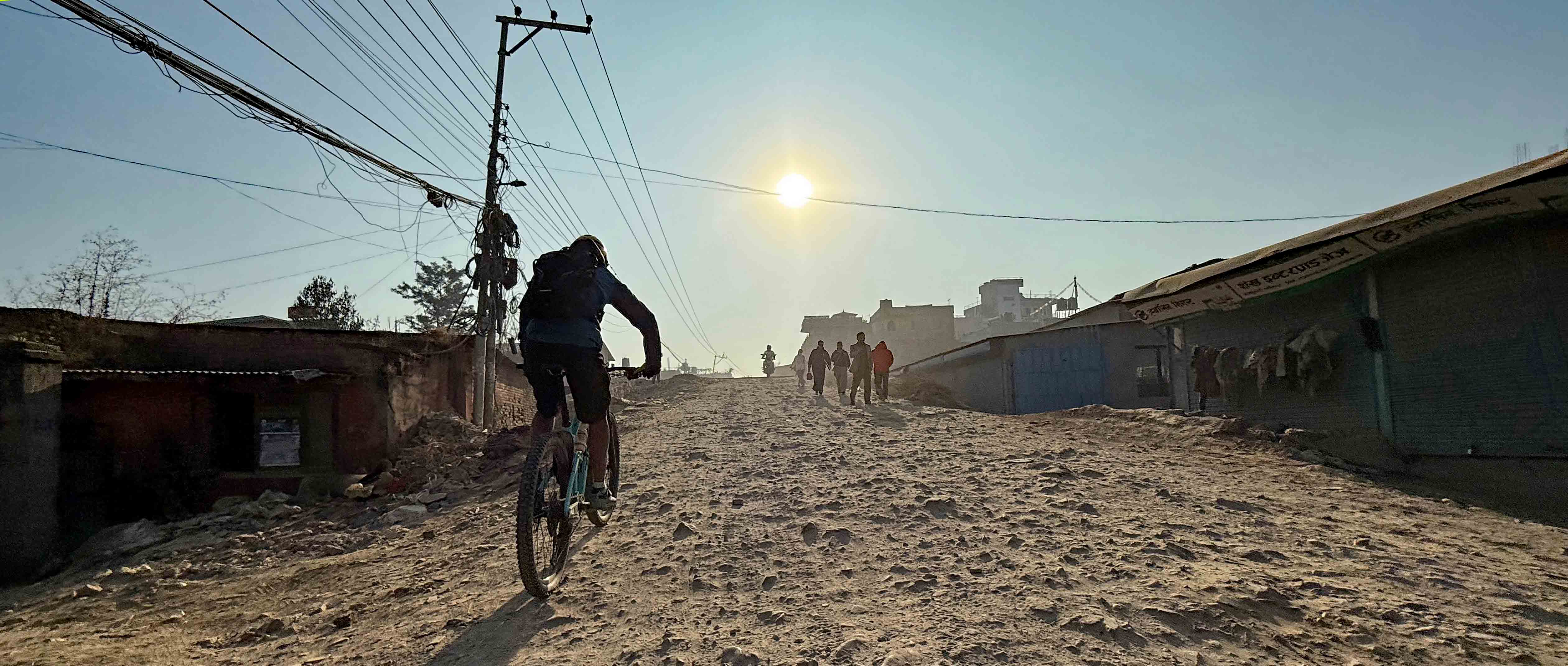
After an initial stretch of paved urban riding, we were soon into the suburbs and onto our first sections of trail. Urban trails can often be found in some of the scruffier areas of town and these were no different. We rode through a mix of small scale industrial, commercial and residential areas and picked up scrappy sections of trails which Rakesh knew and managed to weave together perfectly. This wasn’t by any stretch of the imagination ‘champagne’ gravel – this was more like a rough-bottle-of-cider-hidden-in-a-paper-bag gravel. We shared the initial trails with a mix of locals riding motorbikes, pedestrians using the trail as a shortcut and the occasional taxi. The riding, while not stunningly beautiful, was involving. The surface varied dramatically with hazards being ever-present – half hidden holes, buried bits of metal, unused power cable housings and random concrete blocks. The gradient constantly changed too, which meant you really had to concentrate. While this might not sound like an appealing tourist destination, it gave me a brilliant insight into a side of Nepal that 99% of visitors would never get to see.
Almost imperceptibly we left the residential suburbs behind and found ourselves climbing away from the valley floor and into the range of hills present to both the north and south of the city. The trails swooped and climbed, with just enough steep pitches to really make us concentrate. The early morning light was beautiful and everything seemed to ‘pop’ with vibrant colours and intriguing sounds. I kept thinking of the infamous line from the Wizard of Oz “We’re not in Kansas anymore Toto”. The riding (and the weather) couldn’t have been more different from what I had left behind in deep mid-winter UK.
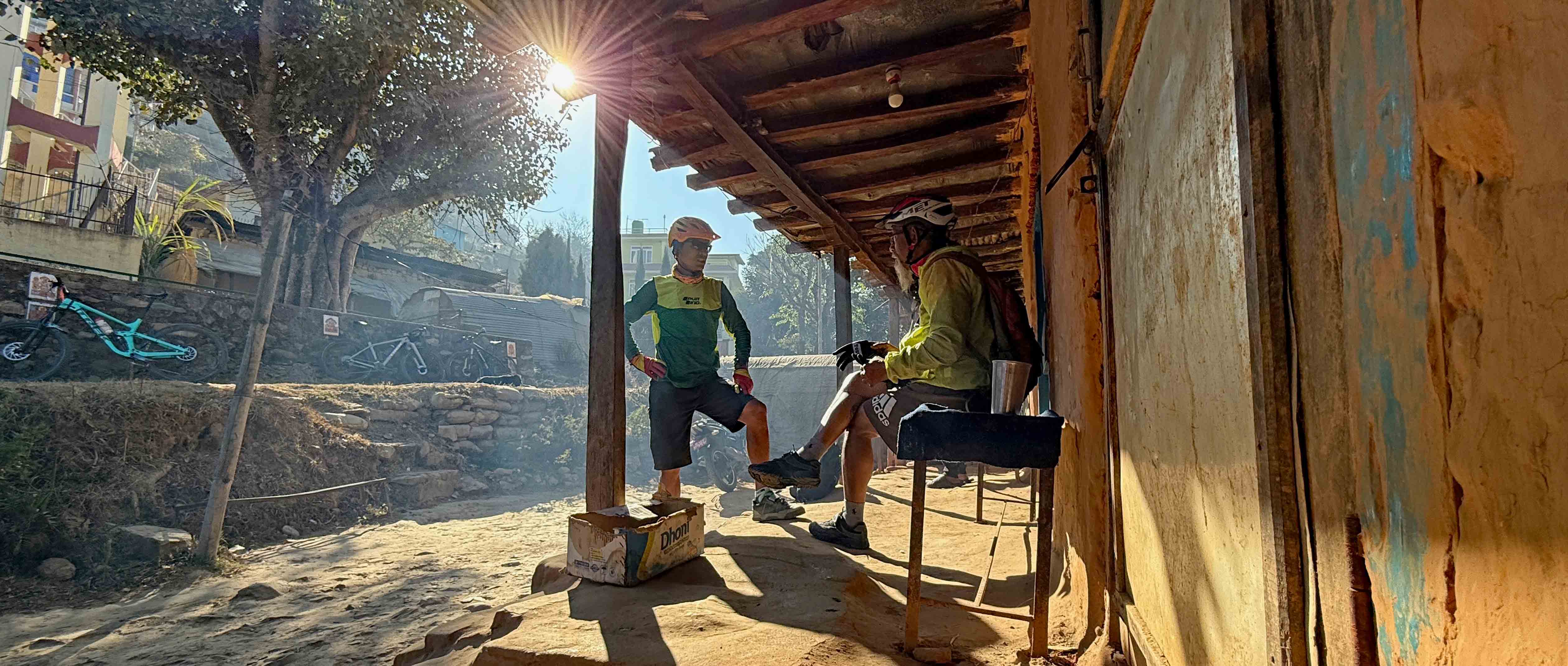
No matter where you cycle in the world, the local riders will always know the best places to stop for a mid-ride café stop. At the top of a short but impressively steep climb, Chhimi peeled off the road the right and parked his bike against a wall under a Banyan tree, a super-common feature in Nepal where villagers often sit and put the world to rights. Just below the tree was a brightly painted house with a wooden awning and an incredibly low, blue painted doorway with an adjacent serving hatch. What initially appeared to be someone’s house was actually a small village shop-cum-café. Chhimi ordered us glasses of delicious milk tea. Probably something I would avoid like the plague in the UK, a blend of spices, which are boiled with the tea and the milk combine to form a deliciously perfumed concoction, with the sweetness balanced perfectly with the spices.
Tea stop done, we were soon back on the trail and heading for Bhaktapur. I’d visited numerous times over the years that I’d been visiting Nepal and it holds a special place in my heart. The outskirts are just as scruffy, busy and chaotic as any other city, but the centre feels like you have arrived into a giant Hollywood set. The streets are primarily paved with brick, traffic is banned from much of it and the buildings are ancient and constructed from beautifully carved timber. It has an incredibly peaceful air and everywhere you look is something interesting. Pottery Square, for example, is home to many local craftspeople creating a wide range of pottery and ceramic objects. Often the potters sit outside and use repurposed truck wheels to form their potter’s wheel. The city is home to innumerable incredibly ornate temples. Small artisan businesses create and sell intricate thangka pictures. From every doorway come enticing smells, with incense often mixing with the scent of cooking.
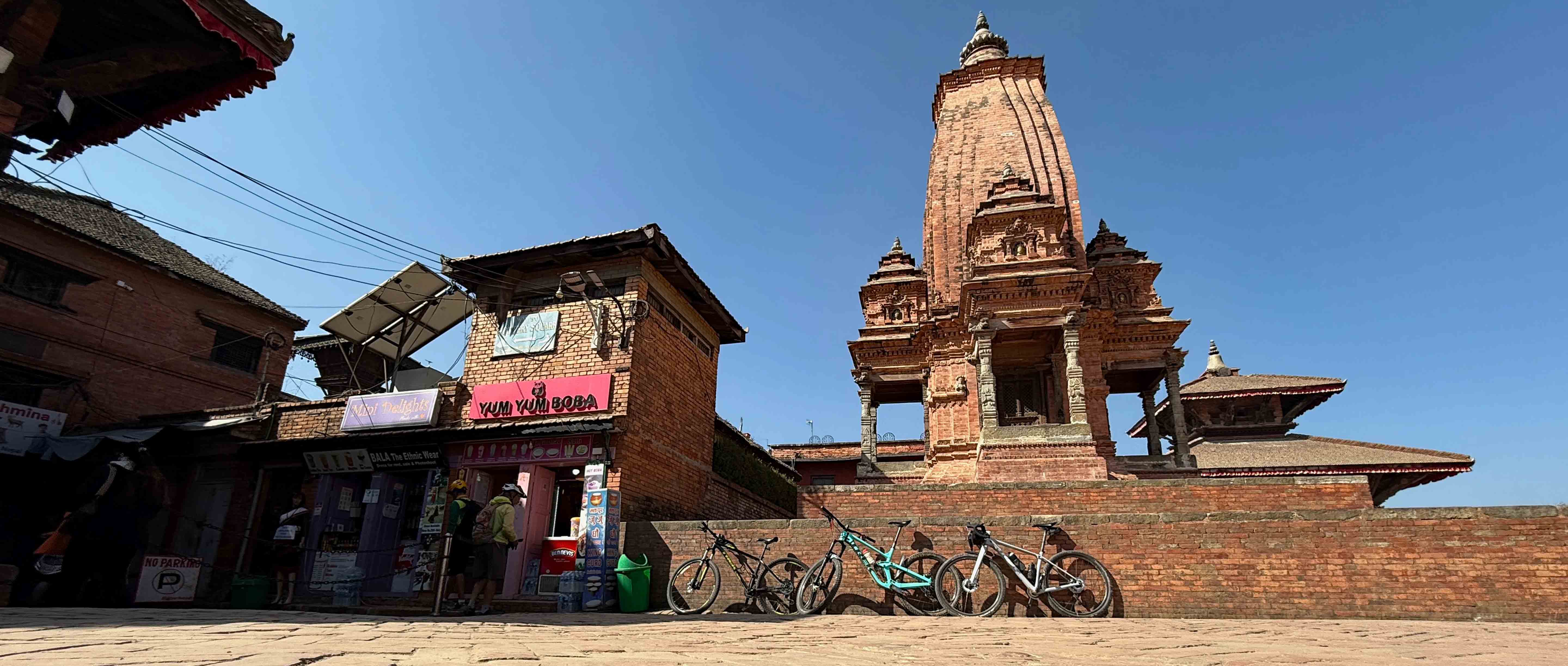
Bhaktapur feels a lot like the antidote to Kathmandu. Where the latter is busy, frenetic and high energy, Bhaktapur feels like the more relaxed cousin, sitting outside in the shade of a Banyan tree, taking in the view and consuming a small pottery cup of juju dhau, the delicious local yogurt (made from fermented buffalo milk).
Arriving by bike is the ideal way to see the city. While cars and four wheeled vehicles are banned from much of the historic center, cyclists can pass the barriers and it means you can access all the main highlights with ease. Rakesh’s knowledge of Bhaktapur meant we could wiggle our way through the maze of tiny back streets with ease and he even managed to find a beautifully backlit ramp with which to exit the city center.
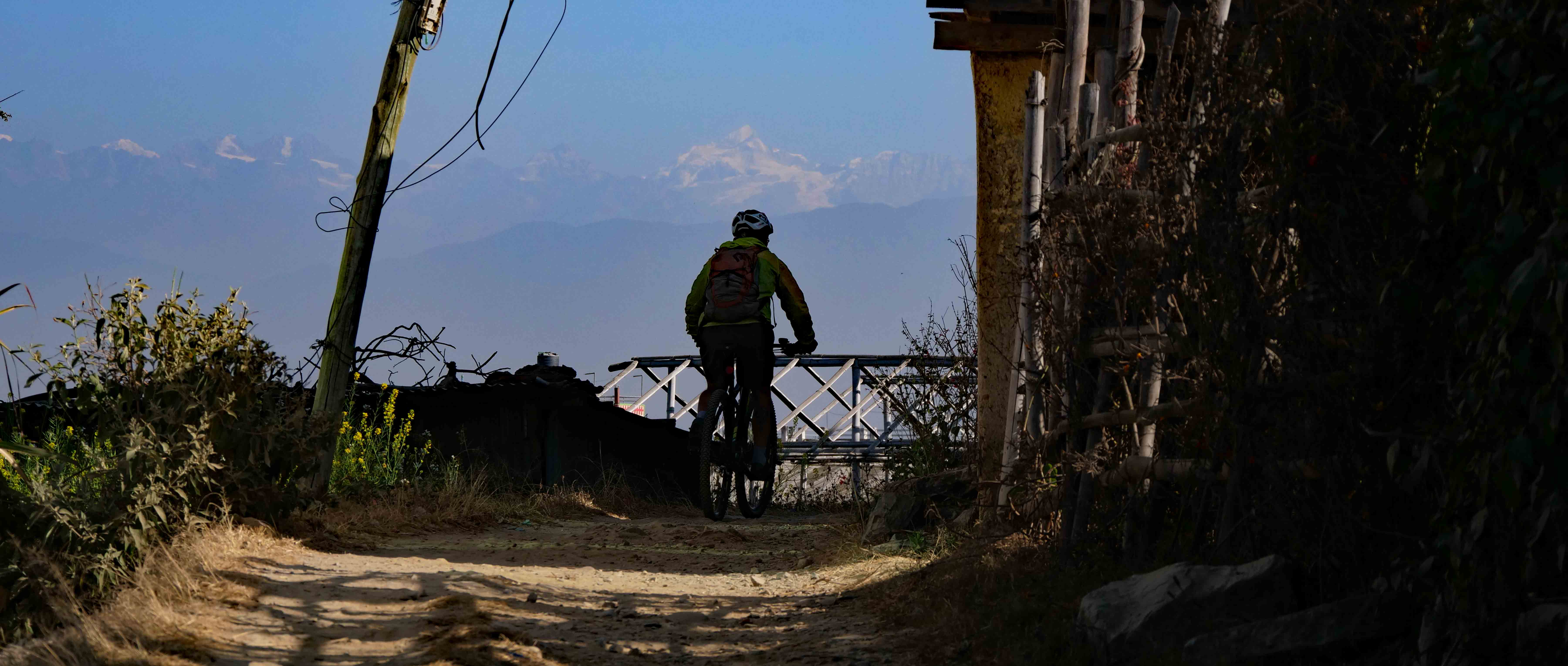
Our route back towards Kathmandu was initially on a busier road, which while not the end of the world wasn’t quite as fun as the outbound route. As we rode along, I was busy looking at the screen of my Wahoo bike computer and spotted numerous interesting looking route options (albeit none which ran parallel to the road that we were on). Initially I wondered why Rakesh wasn’t steering us away from the busier road, but then I realised that neither he nor Chhimmi had any form of bike computer. By this point we had already ridden more than 30 km and Rakesh had obviously memorised every single turn and junction. Considering how convoluted our route had been this boggled my brain. I guess 10-15 years ago, riders in the west would have ridden much more on local knowledge, trail memory and instinct, but pretty much everyone that I ride with now use some form of bike computer, so the skill to be able to guide so proficiently without one was impressive.
Neither the ride I did with Usha and the Trans-Nepal group or with Chhimi and Rakesh would be enough on their own to convince a gravel rider to just ride trails in the Kathmandu Valley (and in fact doing so would be crazy), but they proved what a wealth of trails were out there just waiting to be explored. In a lot of ways, these rides felt like East meets West – the incredible Nepali guides brought their trail knowledge, leadership skills and cultural knowledge, but if I was to do more rides in the area, I would also use some western tech and try even find even more of the untapped potential in the area.